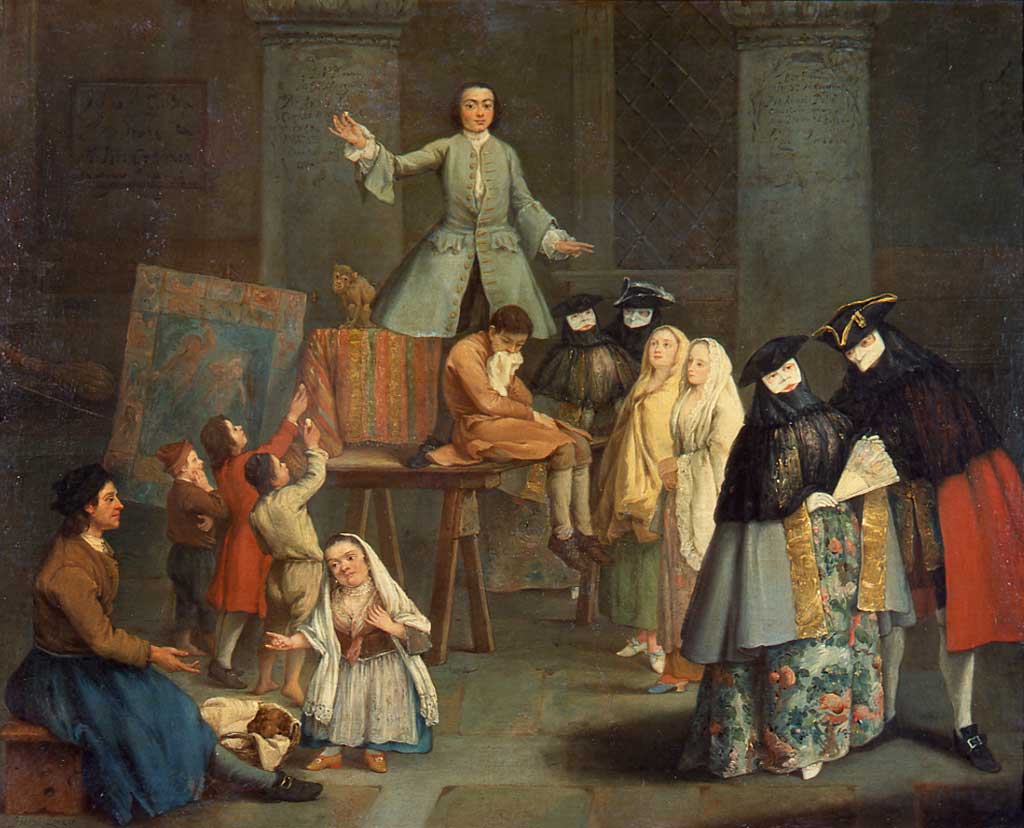Sally Metzler
Chicago, Illinois, United States
Pietro Longhi’s depictions of Venetian society delight the eye by his detailed renderings of elegant satin dresses, demure shoes, and fashionable wigs.
But appearances can be deceiving. Though he lavishes attention on the attractive façade of his subjects, he is equally concerned with their actions. He invites the viewer into the boudoir of a fainting young woman. Might she be lovesick? An apothecary is selling a presumably useless nostrum to a credulous client; and a charlatan dentist is looking for more clients by displaying a bloody tooth he had just extracted.
These activities command interest, and in many respects the paintings represent behavioral commentaries on Venetian society in the dying days of the degenerating republic that once had ruled the Mediterranean. For Longhi this interplay between artificiality and depth lies at the heart of his Rococo masterpieces. His delicate application of paint and subject matter liken him to his French artistic brethren, and indeed Longhi deserves the honorific title of the Italian Watteau. But he died in 1783; and within little more than a decade the Serenissima Republic was downgraded to a provincial backwater of the Habsburg empire.
 |
 |
 |
|
The Faint. National Gallery of Art, Washington DC |
The Apothecary. Gallerie dell’ Accademia, Venice |
The Tooth Puller. Pinacoteca di Brera, Milan |
SALLY METZLER, PhD, is the director of the art collection at the Union League Club in Chicago.
Summer 2018 | Sections | Art Flashes

Leave a Reply